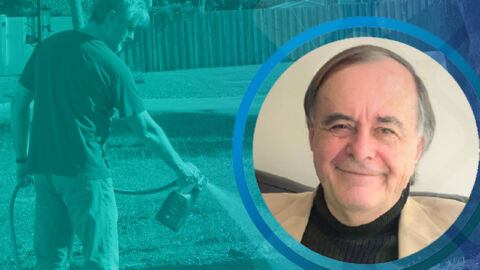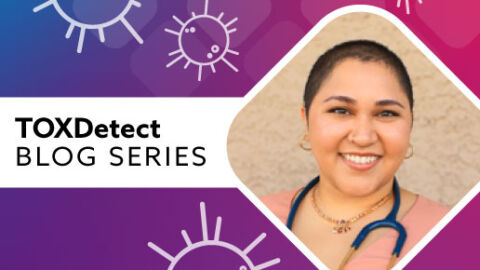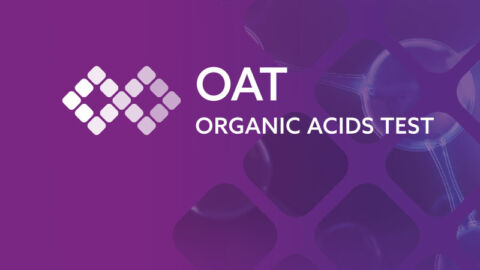In today’s world various exposures to harmful substances, or toxins, is inevitable. With the invention of various chemicals used for processes like agriculture, construction, and other industrial processes, toxic exposures are a part of the average human’s daily life. These toxins that are released into the atmosphere are collectively known as the chemosphere. It’s an odorless, tasteless, invisible collection that has entangled itself into each breath we take. The comforting news is that the human body was designed with its own systems for detoxification. Our liver, kidneys, urinary and gastrointestinal system work together to expel unwanted harmful toxicants the body encounters. At Mosaic Diagnostics we offer a wide variety of testing that will identify toxic exposure. We also assess detoxification capability and the metabolic effects of chronic insult to the body. To assess detoxification ability evaluate the OAT. This profile may also give you direct insight into mold overgrowth and indirect insight into further testing of other toxicants such as heavy metals and toxic chemicals.
During a toxic exposure and post exposure sequelae, individuals may experience a wide variety of symptoms. Depending on the toxic substance or substances, length of exposure, and level of exposure will determine the type and extremity of symptoms experienced. Common symptoms are fatigue, anxiety, brain fog, depression, chronic pain, skin rash, allergies/sensitivities, immune suppression, and dysregulation, among others. When we are exposed to toxins our designed detox systems turn up the volume and work to make them less toxic and able to be cleared. In times of overexposure, like in a source of water contamination or close proximity to a large exposure source, our detox capabilities are outweighed by the toxic load. Understanding this dose-dependent design of toxin exposure is key to understanding why we experience sequelae of increased toxic load. Another consequence of this increased load is increased Phase 1 activity. This can overwhelm Phase 2 leading to increased toxic metabolites that haven’t been conjugated. These unconjugated compounds, in some cases, are more toxic than the toxin itself. An overload of these overtime can lead to increased damage. This cellular damage is known as the cell danger response (CDR). Below is a description of the phases of detox that can be supported to relieve symptoms of toxic exposure.
Phase 0
When it comes to detoxification, we typically start analyzing the process at Phase 1 liver detox. For overall full detoxification, Phase 0 is the true first step. Phase 0 is really your investigation stage. After reviewing the results of an Organic Acids Test, MycoTOX Profile (Mold Exposure), TOXDetect Profile® (Toxic Non-Metal Chemicals), Glyphosate, and Heavy Metals Test, the next step is finding the source or sources of exposure. This step is crucial to full resolution of symptoms. Oftentimes, I find clients and practitioners alike who want to detox without removing the source. This is a wonderful thought and would be amazing if we could do this. Unfortunately, it’s almost impossible to out detoxify a current exposure. Most often we do not know the extent of an exposure source and how that is going to affect the client or how quickly the severity will increase. Once you know the toxin or toxins, finding and eliminating the sources of exposure is top priority. Without completion of Phase 0, added detox support will be just that, support. The great thing about finding out someone is toxic is that the severity of symptoms can help dictate how quickly one needs to find and eliminate the sources of exposure. The more severe the symptoms, the higher the priority.
Common sources of exposure are usually found in the home, workplace, or school environment. I often find that individuals are getting mold and mycotoxin exposure from water-damaged buildings and cars, with food as a lesser exposure source. With chemicals, pesticides, and heavy metals I find water contamination to be a common exposure source. Testing home, school, and occupational water supplies can pinpoint one or potentially dual exposure. Also, where you live may influence your exposure source. Some individuals live near golf courses, parks, airports, factories, farms, etc that are using chemicals that you then breathe. New construction buildings like homes, workplaces, and even your favorite grocery store’s new renovation project could be off-gassing toxic chemicals that affect you. Unfortunately, we cannot dictate what is in our every breath. The chemosphere is so vast and varied that it’s nearly impossible to know everything you’re inhaling. In some cases, moving is the best option. In other cases, waiting until the off-gassing stops is enough to reduce exposure and detoxing and employing the use of air purifiers can reduce toxic load. In any case, eradicating the offending exposure is always necessary for full resolution and detoxification.
Phase 1
Once toxins have been encountered by the body, Phase 1 is the first physiologic phase of the detoxification process. This phase occurs in the liver as the toxins reach hepatic circulation for detox. The goal of this phase is biotransformation. Biotransformation is the chemical alteration of compounds, including toxins, for enhanced excretion. During Phase 1, there are certain reactions that are utilized. The transformation of the toxins prepares them for Phase 2. There are three main classes of reactions that happen in this phase: oxidation, reduction, and hydroxylation.
Oxidation reactions occur by a loss of electrons through oxygenation, dehydrogenation, and electron transfer. The following are examples of oxidation enzymes used:
- Alcohol dehydrogenation: aldehyde dehydrogenation
- Alkyl/acyclic hydroxylation
- Aromatic hydroxylation
- Deamination
- Desulfuration
- N-dealkylation
- N-hydroxylation
- N-oxidation
- O-dealkylation
- Sulfoxidation
The reduction enzymes work to add electrons to the compound. In some cases, reduction can actually activate the toxin making it more detrimental to the host. These reactions are:
- Azo reduction
- Dehalogenation
- Disulfide reduction
- Nitro reduction
- N-oxide reduction
- Sulfoxide reduction
The hydrolysis reactions work by cleaving the compound with the addition of water. This process splits the compound and adds an OH group to one part and the other is bound to hydrogen.
Phase 1 enzymes are collectively known as Cytochrome P450 (CYP450) enzymes and encoded by various genes. They are located in the mitochondria and endoplasmic reticulum of the hepatocytes. A common enzyme is the CYP1A family, which is involved in metabolizing procarcinogens, hormones, and pharmaceuticals. Various natural agents can be added to induce or attenuate the activity of these enzymes. Cruciferous vegetables, berries, resveratrol, and quercetin can upregulate this family of enzymes to support Phase 1 detox. Chrysoeriol is a compound in rooibos tea and celery that can be helpful in those with genetic upregulation. This is helpful as these individuals will have more toxic byproducts due to upregulated phase 1 detox even at an expected exposure rate. The CYP2 family metabolizes drugs, xenobiotics, hormones, ketones, and fatty acids. Polymorphisms in these enzymes can lead to poor metabolism of warfarin, metoprolol, phenytoin, or omeprazole for example. Polymorphism in the CYP2D may be associated with Parkinson’s and lung cancer. Inducers of this family are broccoli, quercetin, chicory root, rosemary, and garlic. Significantly high doses of resveratrol green and black tea, and cruciferous vegetables can inhibit these enzymes in those who have upregulation. The CYP3A4 family regulates the metabolism of caffeine, testosterone, progesterone, PAHs and aflatoxin B. This is the enzyme family that’s commonly inhibited by grapefruit and also goldenseal. Supplements that induce this enzyme are St. John’s wort, valerian, and ginkgo biloba. The CYP4 enzymes have extrahepatic activity and metabolize MCTs (medium chain triglycerides), as well as the bioactivation of pneumo toxic and carcinogenic compounds. Polymorphism here is associated with bladder cancer and colitis. Not much research has been done on this class of enzymes. CYP4A1 is induced by green tea and CYP4B1 is induced by caffeic acid.
After Phase 1 biotransformation, some toxins have now been biotransformed to a hydrophilic state and can be excreted. Other toxins are then acted upon in Phase 2 for excretion. Due to the dose dependent and time dependent nature of toxin exposure, if exposure rates outweigh the body’s detox capability, some of these Phase 1 biotransformed compounds can build up if not conjugated in Phase 2 in a timely manner. Since Phase 1 can sometimes make toxic more toxic this can be detrimental to human health. This is often when individuals suffer from symptoms prior to Phase 2 supportive therapies. The support of the enzyme function will speed the conversion and eventual clearance of the toxins.
Phase 2
After toxins are biotransformed in Phase 1, Phase 2 is the conjugation of the biotransformed substances. These reactions create hydrophilic compounds. This causes the fat-soluble toxins to become water soluble for urinary excretion. Some of the primary reactions used by the liver to conjugate are the following:
- Glucuronide conjugation
- Sulfate conjugation
- Acetylation
- Amino acid conjugation
- Methylation
Glucuronidation is the process of adding glucuronic acid to a toxic byproduct to make it water soluble. This is one of the most prevalent in drug metabolism and detox. Saccharomyces boulardii, a probiotic yeast, can reduce bacterial species that produce beta glucuronidase. This enzyme functions to break down the glucuronidation in the gut. This will release the toxic compound and allow for resorption. Utilizing S. boulardii in detox is a great addition. Another supplement choice is calcium D-glucarate. This compound works to enhance glucuronidation by supplying glucarate. Studies have shown that this compound increases blood levels of D-glucaro-1,4-lactone, which suppresses blood and tissue beta-glucuronidase activity. It works to inhibit beta glucuronidase activity in liver, kidney, and intestinal microbiome tissue. In sulfate conjugation, sulfur is used to make the toxins water soluble. Sulfur donors like n-acetyl cysteine (NAC) and sulforaphane from cruciferous sulfur-rich foods will support this process. Acetylation conjugation involves the transfer of an acetyl group from acetyl coenzyme A via N- acetyltransferases. This family of enzymes is supported with choline, vitamin D, vitamin B12, and quercetin.
The next conjugation reaction is amino acid conjugation. This reaction involves the binding of toxic carboxylic acids, bile acids, and xenobiotics to the amino group of amino acids. The most common amino acids used are aspartate and glutamate. Other amino acids used are taurine, glycine, lysine, serine, proline, ornithine, glutamine and valine. A protein-rich diet will supply these amino acids. In particular, the pesticide, 2,4-Dichlorophenoxyacetic Acid (2-,4-D) that is measured on the TOXDetect Profile, is conjugated to aspartate for detoxification. The addition of this amino acid can be helpful in detoxing this pesticide.
Exposure of this pesticide in rats showed a significant increase in aspartate aminotransferase activity. The last two common conjugation reactions are glutathione conjugation and methylation. Glutathione is use by the body to conjugate acetaminophen toxicity and alcohol toxicity most commonly. It is used to metabolize some medications and many toxins. Glutathione production activity can be assessed on the OAT in marker 58, Pyroglutamic Acid. By adding in NAC, the precursor, or glutathione supplementation, this common Phase 2 enzymatic reaction can be readily supported to support detoxification.
Other foods and nutrients will also support the glutathione S-transferase enzymes like garlic, fish oil, black soybean, purple sweet potato, curcumin, green tea, rooibos tea, Honeybush tea, ellagic acid, rosemary, ghee, and genistein. Methylation is a common topic in the recycling of homocysteine. It is also a key in Phase 2 detox. Measuring homocysteine can be used to support dosing of methylation factors to support detoxification. A methyl group is added to toxins to make them water soluble. The methyltransferases used a methionine group from S-adenosyl-L-methionine (SAMe). The most common methyltransferase enzyme is COMT. This enzyme is highly studied due to its effect on neurotransmitters and estrogen detoxification. Methylation is supported by cofactors and methyl donors like methionine, vitamin B12, vitamin B6, betaine, folate, and magnesium. Food high in protein will provide methionine and legumes, seeds, liver, leaf greens, avocado, asparagus, and certain grains can provide food sources of the other vitamins and nutrients. Sucrose can inhibit methylation and slow this process. These are processed high-sugar foods. The OAT can give insight to how well someone is methylating or not. By supporting all these enzymatic reactions Phase 2 detox will be able to function adequately to fully detox and make toxic compounds hydrophilic for urinary excretion.
Phase 3
Once the source of exposure has been identified and detoxification has begun to be supported, supporting the last phase of detoxification is crucial. In my opinion, it is more important to speed up this phase of detox prior to upregulating Phase 1 and 2. Once toxic substances are sent through the liver to be biotransformed and conjugated they must be eliminated. Phase 3 is the elimination stage of detox. Without proper support of elimination, toxins and potentially more toxic biotransformed products will stay in the body longer. The body has two main ways of excretion. The kidneys and urinary tract and through bowel movements are how we eliminate most toxins. By priming these routes of excretion, we can round out treatment. In times of urinary retention or constipation, upregulating the body’s detox capacity would lead to the retention of toxins and potential reabsorption. In times of dehydration or kidney damage the kidneys are unable to adequately filter and release toxins.
In the body, bile is used to help us absorb fat- and fat-soluble substances. Many toxins are fat soluble and get packed in bile and travel to the GI tract. Here 95% bile is normally reabsorbed in the ileum to be recycled and used again in the liver via enterohepatic recirculation. In time of detoxification this recirculation can impede healing as the toxin can be recirculated repeatedly before it’s a part of the 5% of bile that gets excreted. To combat this recirculation phenomenon, binding agents called binders are used. They act like static cling and attract compounds to them. The adsorbent nature of these compounds attracts bile and bind them tightly. This binding ability is great, but it is reversible. Bile can be released from the binding agent if left too long in the GI tract without excretion. In the intestines, there are also intestinal flora enzymes that can hydrolyze some glucuronide and sulfide bonds and cause resorption of toxic compounds. Due to the binding nature of binding, they can increase the risk of constipation. In previously constipated clients, ensuring adequate bowel movements prior to adding detox factors and binders is an important top priority. By priming Phase 3 detox all the wonderful work done to support Phase 1 and 2 will be easily eliminated.
Overall priming Phases 0-3 of detox are all necessary in any state of healing. These phases work together and were designed to protect and heal our bodies. By supporting each phase individually, their synergistic activity is enhanced. Through testing with Mosaic Diagnostics you can identify offending toxic load and begin the investigation stage, or Phase 0.
References
1. Crichton, R. (2018, May 25). Zinc – Lewis Acid and Gene Regulator. Biological Inorganic Chemistry (Third Edition). SOURCE
2. Doull, J., & Rozman, K. K. (2000, April 3). Dose and time as variables of toxicity. Toxicology. SOURCE
3. Dwivedi C;Heck WJ;Downie AA;Larroya S;Webb TE; (n.d.). Effect of calcium glucarate on beta-glucuronidase activity and glucarate content of certain vegetables and fruits. Biochemical medicine and metabolic biology. SOURCE
4. Gupta, P. K. (2016, September 2). Biotransformation. Fundamentals of Toxicology. SOURCE
5. Hodges, R. E., & Minich, D. M. (2015). Modulation of Metabolic Detoxification Pathways Using Foods and Food-Derived Components: A Scientific Review with Clinical Application. Journal of Nutrition and Metabolism. SOURCE
6. Hundt, M. (2020, October 3). Physiology, Bile Secretion. StatPearls [Internet]. SOURCE
7. Knights, K. M., Sykes, M. J., & Miners, J. O. (2007). Amino acid conjugation: contribution to the metabolism and toxicity of xenobiotic carboxylic acids. Expert Opinion on Drug Metabolism & Toxicology, 3(2), 159–168. SOURCE
8. Macherey, A.-C., & Dansette, P. M. (2003). CHEMICAL MECHANISMS OF TOXICITY: BASIC KNOWLEDGE FOR DESIGNING SAFER DRUGS. The Practice of Medicinal Chemistry, 545–560. SOURCE
9. Mohamed, M.-E., & Frye, R. (2010). Effects of Herbal Supplements on Drug Glucuronidation. Review of Clinical, Animal, andIn VitroStudies. Planta Medica, 77(04), 311–321. SOURCE
10. National Institutes of Health. (n.d.). ToxTutor - Chemical Reactions. U.S. National Library of Medicine. SOURCE
11. Naviaux, R. K. (2019, December 23). Perspective: Cell danger response Biology-The new science that connects environmental health with mitochondria and the rising tide of chronic illness. Mitochondrion. SOURCE
12. Nilsen, O. G., Hellum , B. H., & Hu, Z. (2007, January). The induction of CYP1A2, CYP2D6 and CYP3A4 by six trade herbal products in cultured primary human hepatocytes. Basic & clinical pharmacology & toxicology. SOURCE
13. S;, S. J. L. V. N. K. L. C. C. (n.d.). 1,25-Dihydroxyvitamin D3 treatment results in increased choline acetyltransferase activity in specific brain nuclei. Endocrinology. SOURCE
14. Secretion of Bile and the Role of Bile Acids In Digestion. (n.d.). SOURCE




